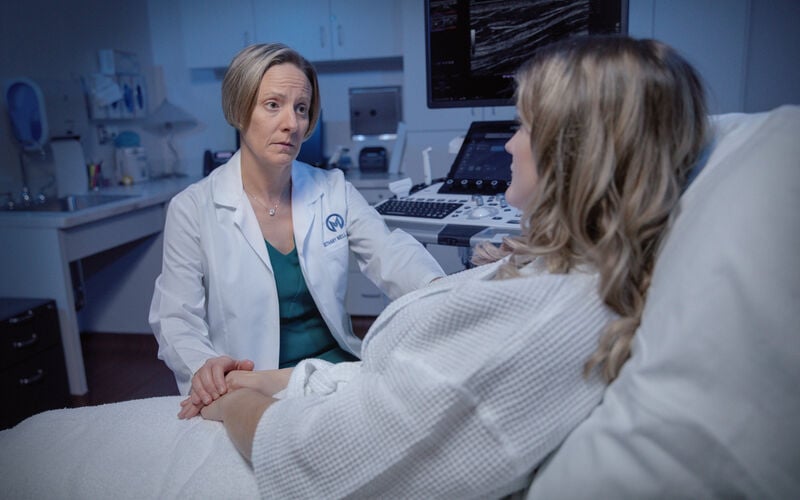Hormone Therapy for Breast Cancer
Breast cancer originates in the cells of the breast, most often in the milk ducts or milk-producing glands (lobules). The cancer forms when healthy breast cells undergo harmful DNA changes that lead to uncontrolled cell growth and division. Excess cells then build up, bind together and form a tumor, which can sometimes be felt as a breast lump or seen on an imaging test, such as a mammogram. The exact cause of breast cancer is not fully understood, but scientists believe it involves genetic mutations that can be influenced by factors such as age, family history, hormone levels and lifestyle choices.
Symptoms of breast cancer can include a new lump in the breast or armpit, changes in the size or shape of a breast, dimpling of breast skin and unusual nipple discharge. Breast cancer may be treated with surgery, radiation therapy, chemotherapy, targeted therapy, and/or hormone therapy, depending on the type and stage of the cancer.
Hormone therapy may be considered for breast cancer if the tumor cells have receptors for hormones, such as estrogen or progesterone. The treatment works by blocking the body’s ability to produce these hormones or by interfering with the hormone’s ability to stimulate cancer cell growth. Hormone therapy can be particularly effective for hormone receptor-positive breast cancer. It may be used before surgery to shrink a tumor and make it easier to remove, after surgery to reduce the risk of cancer recurrence or as a standalone treatment to control the spread of advanced breast cancer.


Top 1% of Cancer Hospitals
Schedule an AppointmentWhat does hormone therapy for breast cancer involve?
A key component of hormone therapy for breast cancer is medication, such as:
- Selective estrogen receptor modulators (SERMs) – Drugs such as tamoxifen can bind to estrogen receptors on cancer cells, blocking the hormone’s ability to promote cancer growth.
- Aromatase inhibitors – Drugs such as anastrozole, letrozole and exemestane can reduce the amount of estrogen in a postmenopausal woman’s body by inhibiting the enzyme aromatase, which converts androgens into estrogen.
- Estrogen receptor downregulators (ERDs) – Drugs such as fulvestrant can degrade estrogen receptors, reducing their presence on cancer cells.
For premenopausal women, ovarian suppression is another form of hormone therapy. Ovarian suppression may involve the use of drugs, such as gonadotropin-releasing hormone (GnRH) agonists, to temporarily shut down the production of estrogen by the ovaries. Another option is surgically removing the ovaries (oophorectomy).

What are the risks and possible complications of hormone therapy for breast cancer?
Hormone therapy for breast cancer, while potentially effective, carries certain risks and potential complications, which can vary depending on the type and duration of treatment and the patient’s overall health. For instance, the side effects of SERMs can include:
- Hot flashes and night sweats
- Unusual vaginal discharge
- Mood swings
- Fatigue
- Irregular menstrual periods in premenopausal women
Uncommon but potentially serious complications of SERMs include:
- Increased risk of blood clots
- Increased risk of uterine (endometrial) cancer
- Increased risk of heart attack and stroke
- Cataracts
The side effects of aromatase inhibitors can include:
- Hot flashes and night sweats
- Vaginal dryness or irritation
- Joint and muscle pain
- Fatigue
- Impotence in men with breast cancer
Uncommon but potentially serious complications of aromatase inhibitors include:
- Bone thinning (osteoporosis)
- Increased risk of fractures
- Increased risk of heart attack and stroke
What to expect during recovery from hormone therapy for breast cancer
While recovering from hormone therapy for breast cancer, the patient can expect a gradual reduction in side effects. Fatigue and menopausal symptoms, such as hot flashes, night sweats and vaginal dryness, may persist but should decrease in intensity over time. Bone health is a concern, particularly if the patient was treated with aromatase inhibitors, so follow-up care usually involves ongoing monitoring for osteoporosis and maintaining a calcium-rich diet or taking supplements as recommended by the healthcare team. Regular follow-up appointments will also be necessary to monitor for signs of cancer recurrence and manage any long-term effects of the therapy.
How effective is hormone therapy for breast cancer?
Hormone therapy can be effective for hormone receptor-positive breast cancers, which account for approximately 70-80% of breast cancer cases. By blocking or lowering the levels of estrogen and progesterone in the body, hormone therapy can reduce the risk of cancer recurrence and halt the progression of cancer cells that depend on these hormones to fuel their growth.
Benefit from world-class care at Moffitt Cancer Center
If you would like to learn more about hormone therapy for breast cancer, you can request an appointment with a specialist in Moffitt’s renowned Don & Erica Wallace Comprehensive Breast Program by calling 1-888-663-3488 or submitting a new patient registration form online. We do not require referrals.
